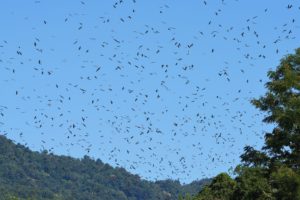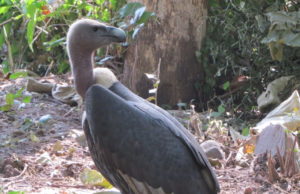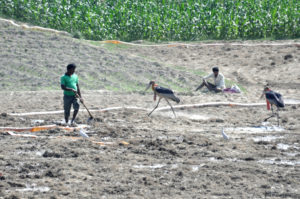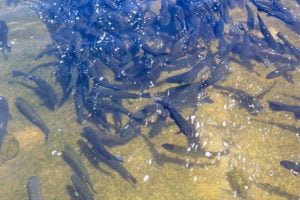Get the whole picture
This is one in a series of articles exploring some of the ways communities and governments in Asia are responding to the biodiversity crisis. You can view the whole series here
On Earth Day 2021, two little raptors named Chiulon and Irang began a non-stop five-day flight over the Arabian Sea, part of their annual journey from southern Africa to their breeding grounds in China. From the day they set off on 22 April, a community in a remote district of northeast India was following their journey with interest, even as Covid-19’s deadly second wave swept through the country.
“Since the two Amur falcons were radio-tagged and christened in Tamenglong [in Manipur, northeast India] in 2019, people here have been fascinated by their 20,000 km journey across continents,” says H Singh, forest officer of Tamenglong district. “Many are following updates of their movements on our Facebook page and anxiously praying that they reach India and return to our district safe and sound later this year!”
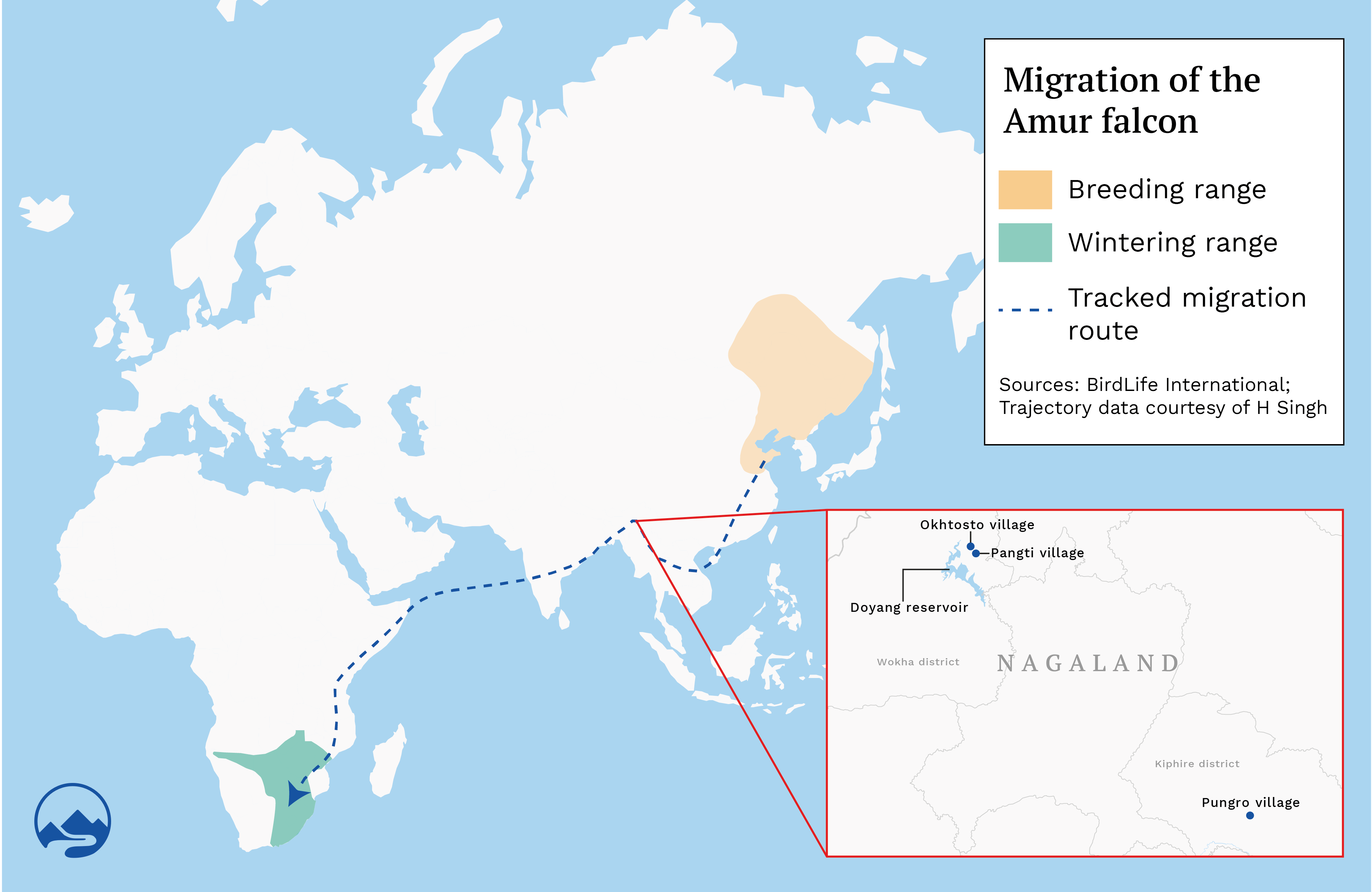
This is a dramatic change from the situation less than 10 years ago.
“In October 2012, we visited the Doyang dam in Wokha district of Nagaland, where Amur falcons roost in huge numbers while migrating from their breeding grounds in Mongolia to Africa,” recalls Bano Haralu, former TV journalist and founding trustee of Nagaland Wildlife and Biodiversity Conservation Trust (NWBCT). “Because of the sheer length of their migration, estimated at over 20,000 km, this stopover is critical for the birds to rest and recuperate before their onward journey.”
That year, Haralu witnessed killing on an unimaginable scale. Trees on the banks of the reservoir were covered in nets that trapped falcons in their thousands. The air was thick with the smell of falcon meat being smoked, with local people selling the meat in markets up to 100 km away. They reported earning over USD 266 a month from the hunt, a significant sum of money in a region where most people depend on subsistence agriculture and hunting.


While hunting of wild animals has happened for thousands of years, the huge number (an estimated 120,000-140,000) of Amur falcons being killed on migration was alarming. “A large proportion of the global population of Amur falcons congregates in northeast India during their migration,” says Suresh Kumar, an Amur falcon researcher at the Wildlife Institute of India. “If this illegal trapping and killing of Amur falcons had continued unchecked, it would have had a disastrous impact on their worldwide population.”
From poaching to protection of Amur falcons
“We all knew that convincing local communities to convert from poaching to protecting Amur falcons would be difficult,” recounts H Tokaho Kinimi, wildlife warden of Nagaland’s Dimapur district. Hunting is both a hobby and livelihood for people in this remote mountainous state.
While some conservationists suggested giving locals financial incentives to protect the birds, Haralu had a different take. “I’ve always believed that the conservation of our wild spaces and species must be its own reward,” she says.
Together with wildlife photographer and conservationist Ramki Sreenivasan, she founded NWBCT, and launched an effort to change locals’ attitudes towards the little raptor. NWBCT organised weekly ‘eco clubs’, went door-to-door talking with villagers and engaged with village councils. Haralu recounts: “Children learnt about the miracle of the Amur falcon’s migration: the fact that their five-day flight across the ocean from here to Africa is the longest non-stop oversea flight in all [raptors], that farmers in faraway Africa await their arrival to feed on locusts and help get farmlands ready for the next crop.”

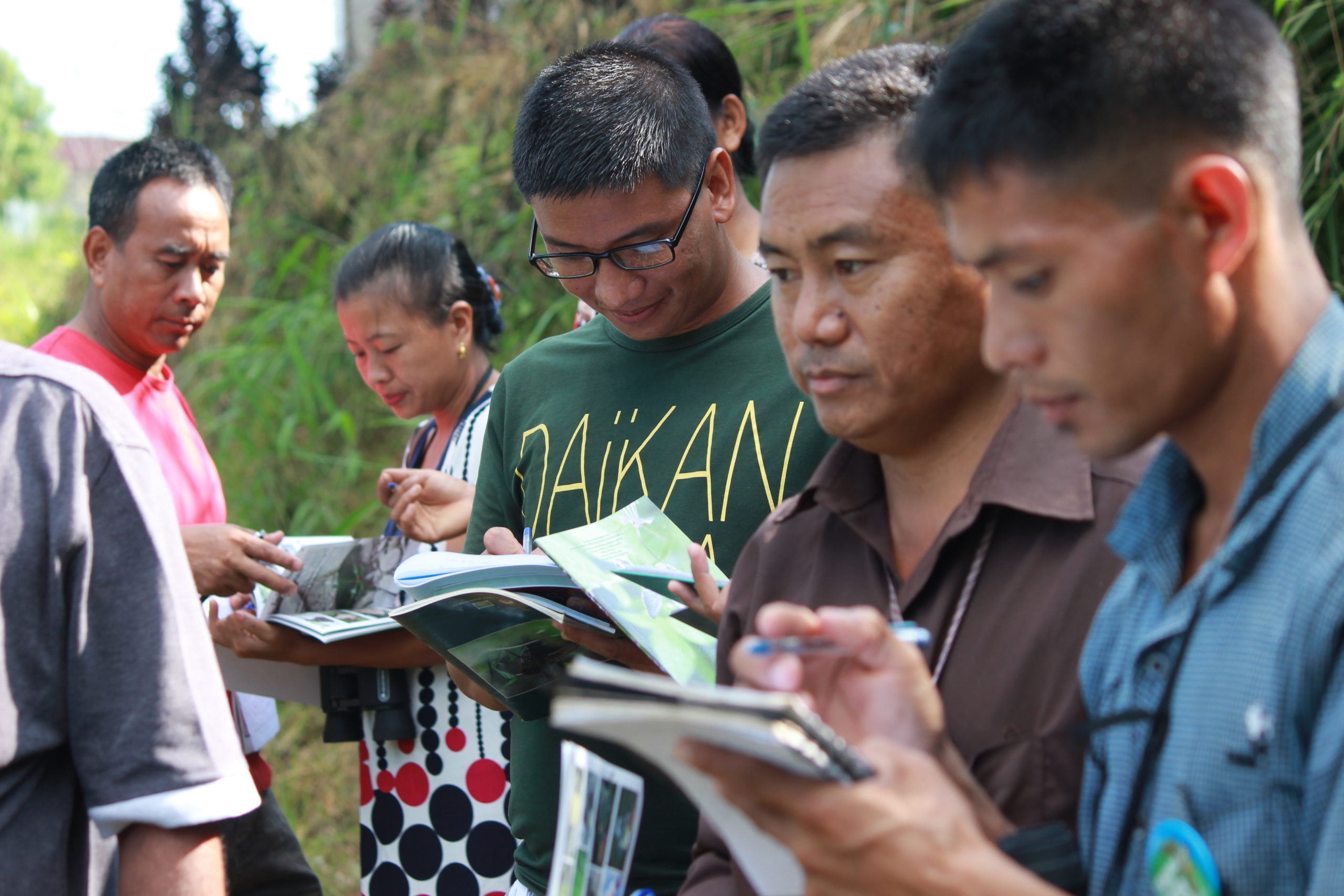
Pangti is one of the villages closest to the Doyang reservoir. In 2013, just before the arrival of the Amur falcons in October, the village council announced a ban on their trapping and killing. Pungro and Okhtosto, other villages near Amur falcon roosting sites, followed suit. The Indian government instituted stiff penalties for falcon hunters. Simultaneously, international experts and a team from the Wildlife Institute of India satellite-tagged a handful of Amur falcons to study their behaviour and create awareness among locals about their long migratory journey. Kumar says this helped to change locals’ attitudes towards conservation.
Hunters become bird guides and homestay hosts
Providing alternative livelihoods that ensure villagers benefit from the wellbeing of the Amur falcons was a key part of the conservation project. NWBCT worked with village councils to train locals as guides and homestay hosts.
Yentsao Odyuo, a local guide and newly trained avian expert, says: “When I take bird-watchers from across the world to watch Amur falcons flying above Doyang reservoir, I see the spectacle through their eyes. I feel proud they choose to come to my little village every year, even though I can still remember eating [the falcons’] delicious smoked meat as a child.”
Haralu estimates each homestay host could earn up to USD 950 from October to December, when the Amur falcons roost in Pangti. But the arrival of Covid-19 and lockdowns in spring 2020 brought international tourism to a halt, leaving communities without the support of visitors. The project’s stakeholders feared that the loss of tourism revenue and absence of policing would result in a resurgence of hunting when the Amur falcons arrived in October 2020.
These fears were well-founded: the wildlife trade monitoring NGO Traffic reported a “significant increase in overall poaching of wild animals in India during the lockdown period” in 2020. Increased poverty and food insecurity resulting from the pandemic’s impacts have set back conservation efforts in poor regions with high biodiversity.
Conservation takes root despite pressures of pandemic
Happily, Nagaland’s Amur falcons appear to have escaped this grim fate. By October 2020, villages in Nagaland and in the other northeast Indian states of Assam, Meghalaya and Manipur began reporting never-before-seen flocks of Amur falcons. Wildlife warden Kinimi reported “a sea” of them in Hakhize village in Nagaland, a new roosting site. In Tamenglong district, Singh, the forest officer, reported that “Amur falcons came in higher numbers than ever before to our area.”
Nowhere in the world has there been such a change in people’s attitudes towards animal conservation as we have witnessed in Nagaland and ManipurSuresh Kumar, Amur falcon researcher at the Wildlife Institute of India
While the pandemic has made it hard for scientists to estimate populations of this highly mobile bird, village committees and forest officials report an increase in falcon roosting sites. Kumar explained that this does not necessarily mean the Amur falcon’s population has risen significantly and that they could be foraging for food in new spots, but the indications are good.

There is more good news. Forest officials and conservationists like Haralu report that they did not come across a single case of mass killing of Amur falcons while the birds were present in northeast India between October and December 2020. Could this mean that local communities are developing an emotional connection with Amur falcons that is compelling more and more people to protect, not poach, the birds?
Kumar thinks so. “Even two years ago, I wouldn’t have expected the locals to protect the birds in the absence of policing, like they did in 2020,” he says. “Nowhere in the world has there been such a change in people’s attitudes towards animal conservation as we have witnessed in Nagaland and Manipur.” The pandemic might have proved that Amur falcon conservation success is here to stay.
